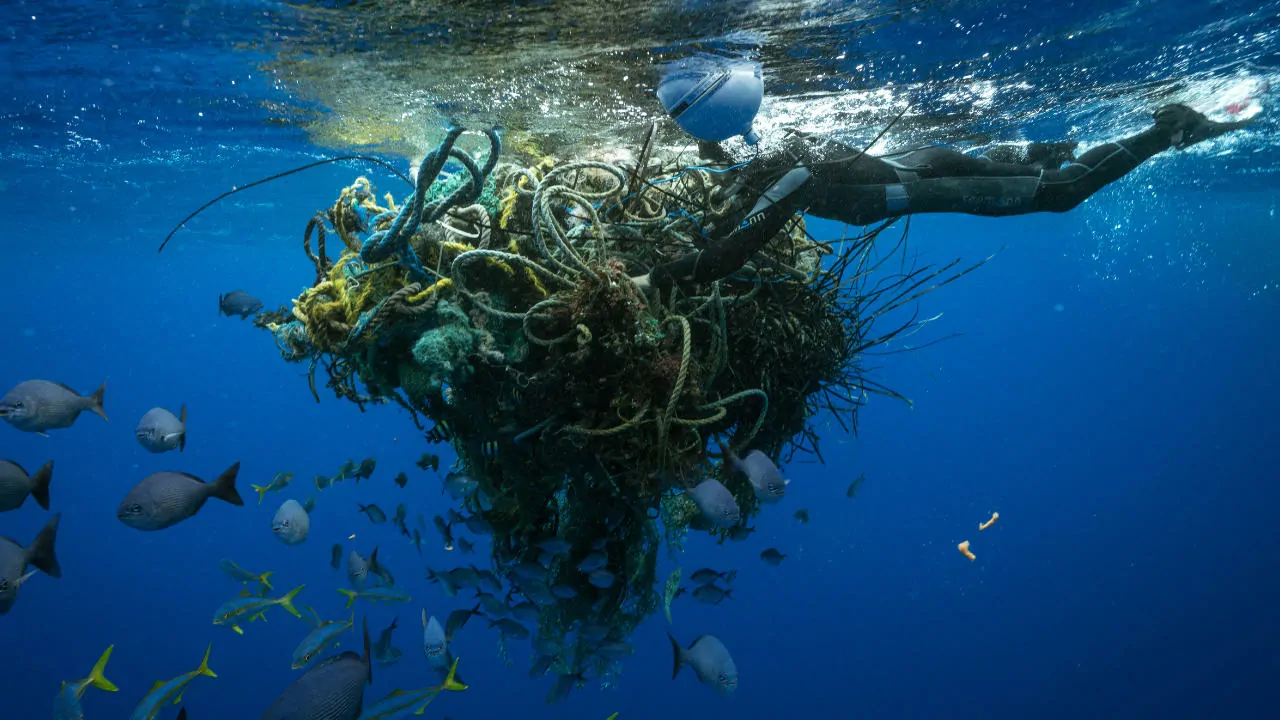The Great Pacific Garbage Patch is a massive floating accumulation of plastic waste in the Pacific Ocean. Among the many types of debris, fishing nets stand out as a major contributor. Studies show that fishing nets make up nearly half of the estimated 80000 tonnes of plastic floating in this area, highlighting a critical environmental issue caused by human activity.
These fishing nets, often called ghost nets, are discarded or lost by fishing vessels and continue to trap marine life, posing deadly threats to fish, turtles, seabirds, and even whales. Unlike microplastics, which account for most of the individual pieces but little of the mass, fishing nets are heavy and bulky, dominating the patch by weight.
The large amount of fishing nets in the ocean not only threatens biodiversity but also damages coral reefs and disrupts marine ecosystems. Ghost nets drift for years, causing harm far beyond their original fishing grounds. Their resilience against natural degradation makes them one of the most persistent forms of ocean pollution.
Addressing the problem of fishing nets requires collaborative international action. Solutions include improving tracking systems for fishing gear, promoting recycling programs, enforcing stricter regulations on fishing activities, and encouraging responsible disposal practices. Organizations are also working on retrieval missions to remove abandoned nets from the oceans.
Understanding the role of fishing nets in ocean pollution reminds us that marine conservation needs targeted strategies. By tackling this major source of plastic waste, we can protect our oceans, preserve marine life, and ensure a healthier planet for future generations.
Featured Image : greenpeace.org
